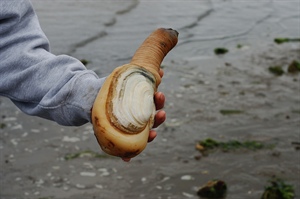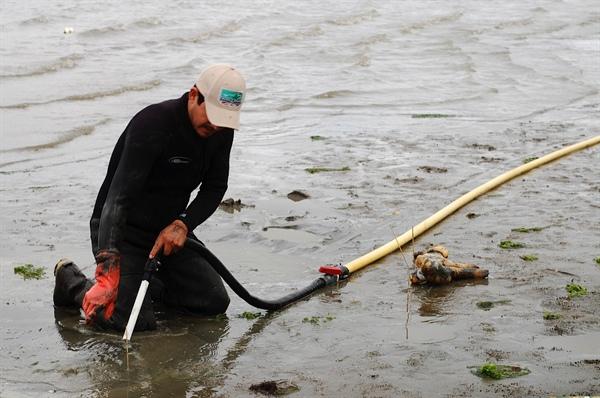Effects of geoduck aquaculture on the environment—a synthesis of current knowledge
A November 2013 literature review by Washingtom Sea Grant synthesizes the state of the science of geoduck clams and the potential environmental impacts of geoduck aquaculture in the Puget Sound region.

Geoducks (Panopea generosa) are one of the largest burrowing clams in the world. They are native to Puget Sound and are often fished recreationally or commercially. The Washington Sea Grant Geoduck Research Program began looking at the ecological impacts of geoduck farming in 2008, and the 2013 literature review examines the impacts of aquaculture on habitat, disease transmission, and genetic change in both wild and farmed populations.

Washington Sea Grant Geoduck Research Program (under Geoducks heading)
Additional peer-reviewed studies related to Puget Sound geoducks:
Ruesink, J.L. 2012. Seasonal effects of clams (Panopea generosa) on eelgrass (Zostera marina) density but not recovery dynamics at an intertidal site. Aquat. Conserv. Mar. Freshwat. Ecosyst. 22:712-720.
Brown, R. AA., and E. V. Thuesen. Biodiversity of mobile benthic frauna in geoduck (Panopea generosa) aquaculture beds in southern Puget Sound, Washington. J. Shellfish Res. 30:771-776.
Brown, R. AA., and E. V. Thuesen. Biodiversity of mobile benthic frauna in geoduck (Panopea generosa) aquaculture beds in southern Puget Sound, Washington. J. Shellfish Res. 30:771-776.
Article Type
Reports
Species Tag


